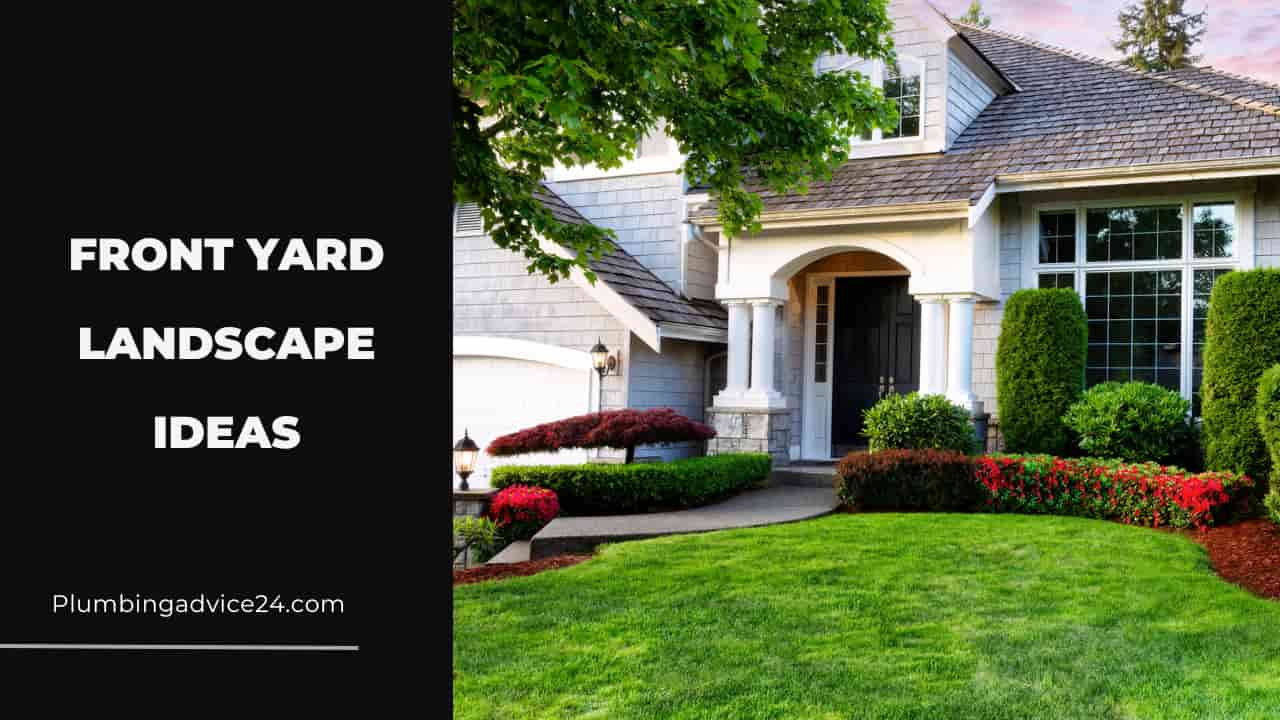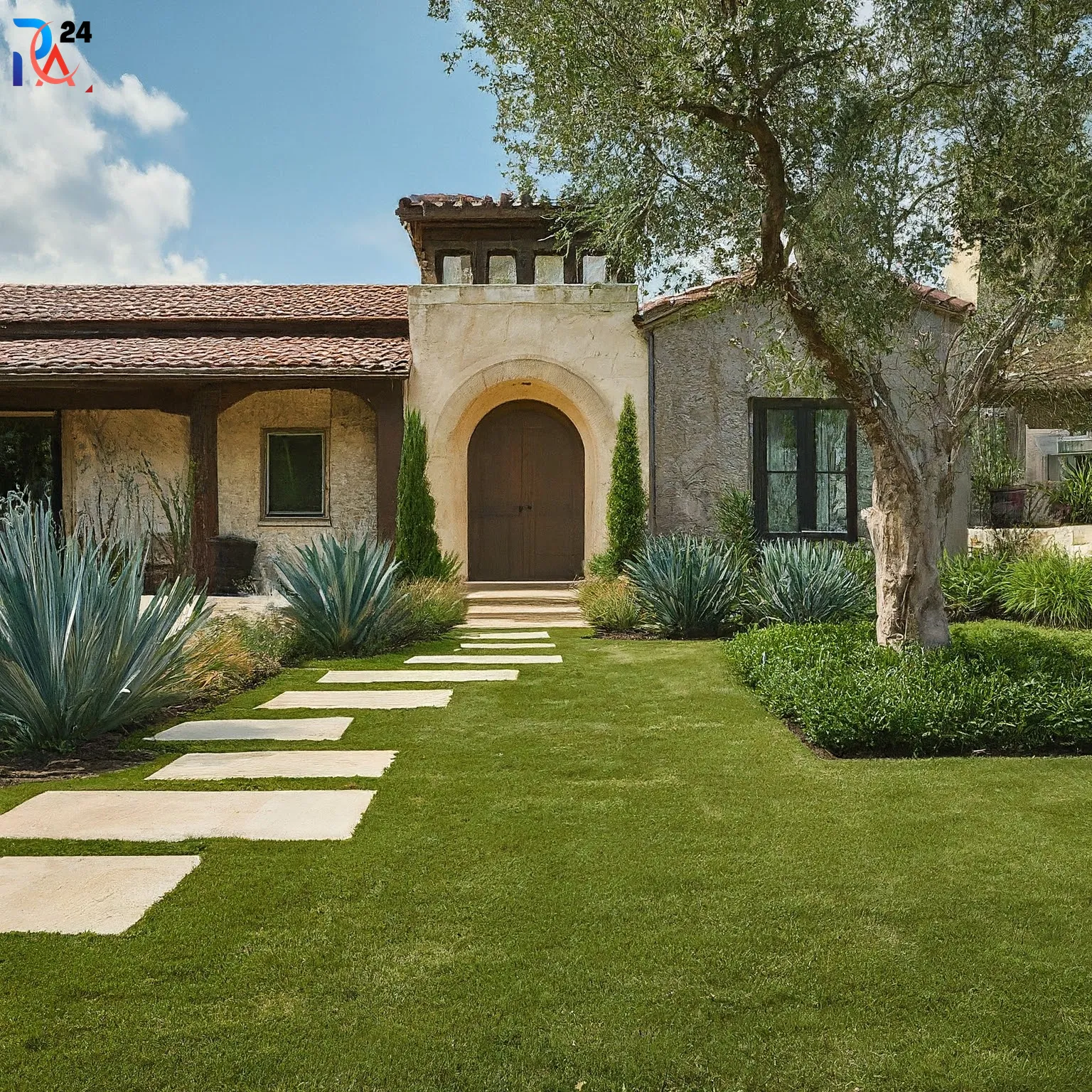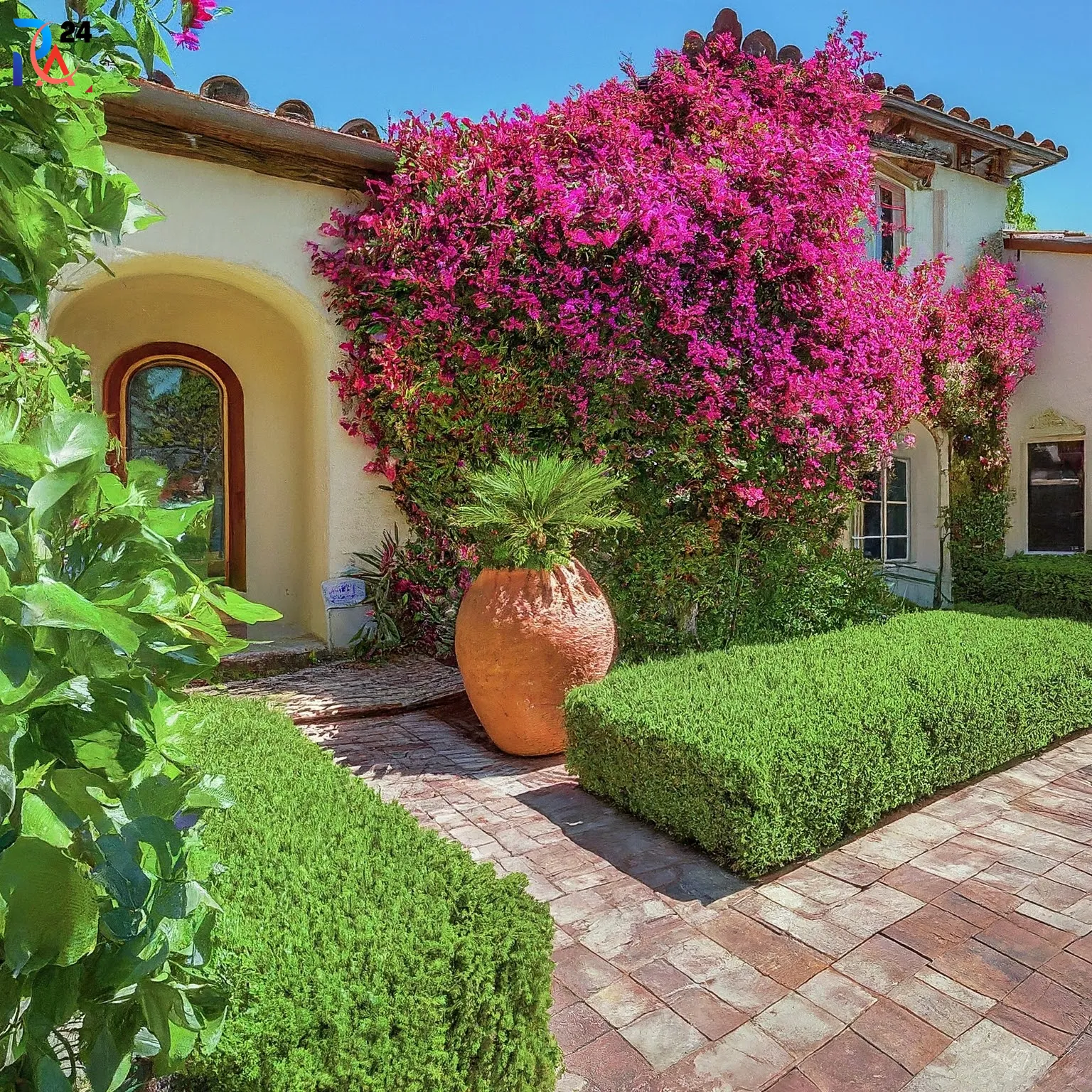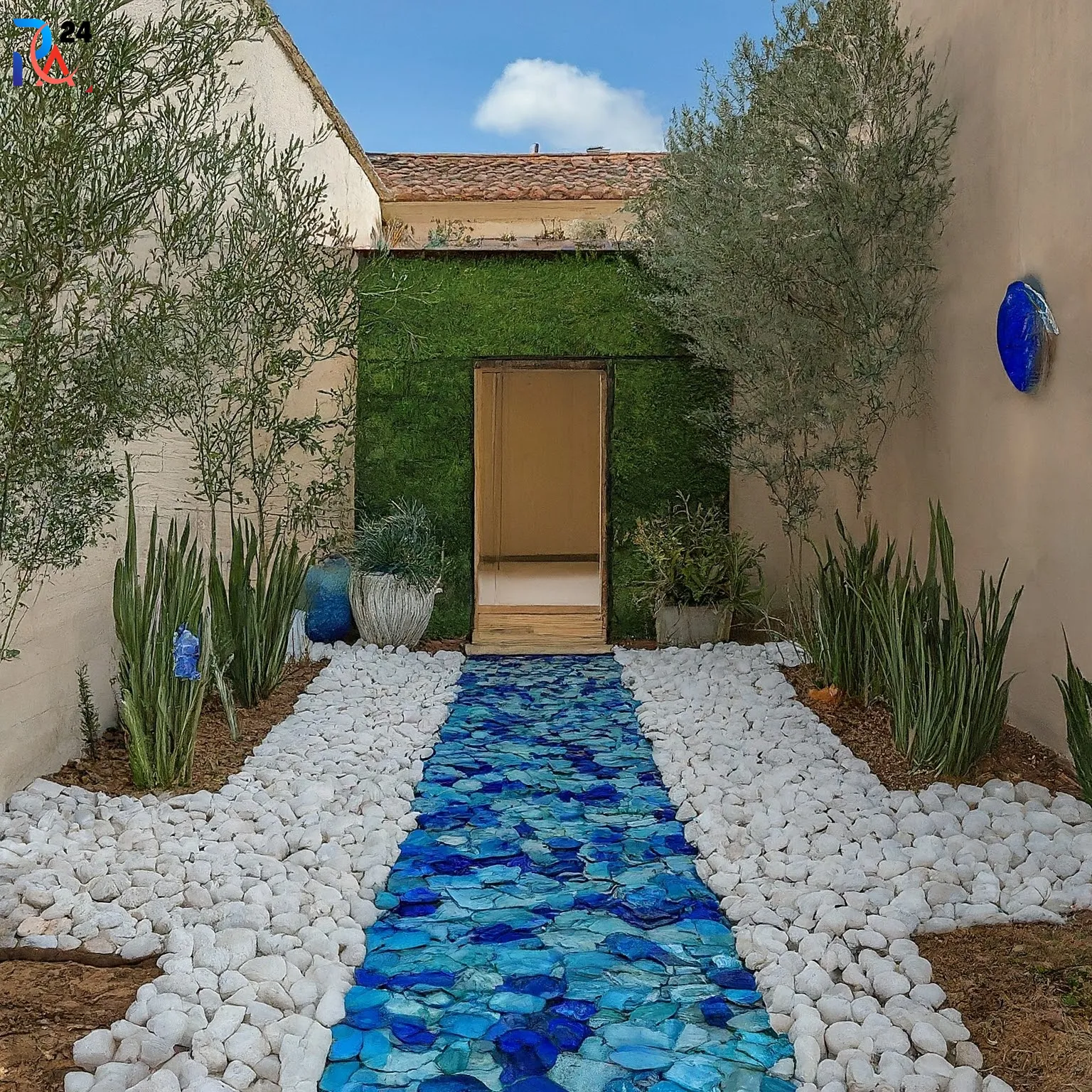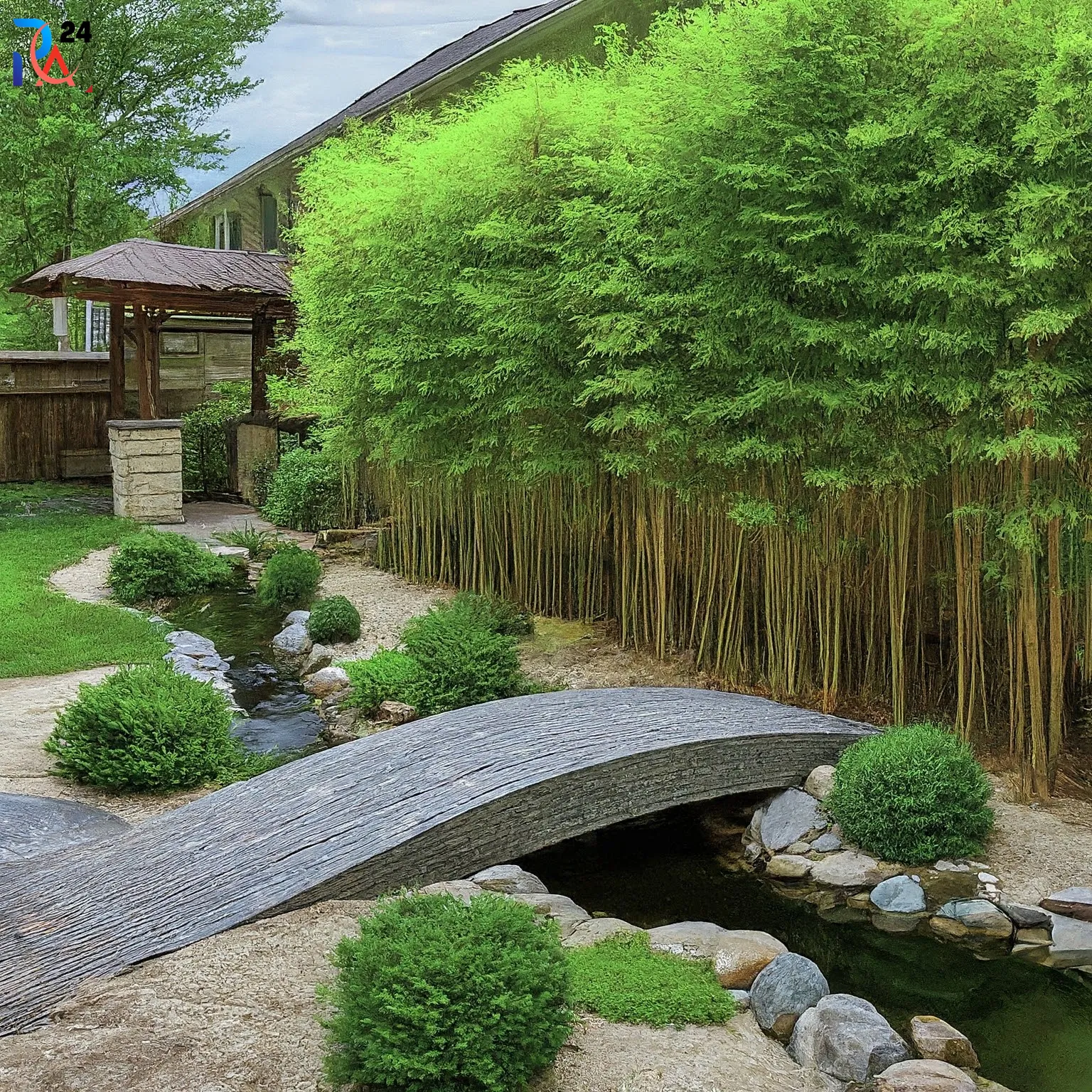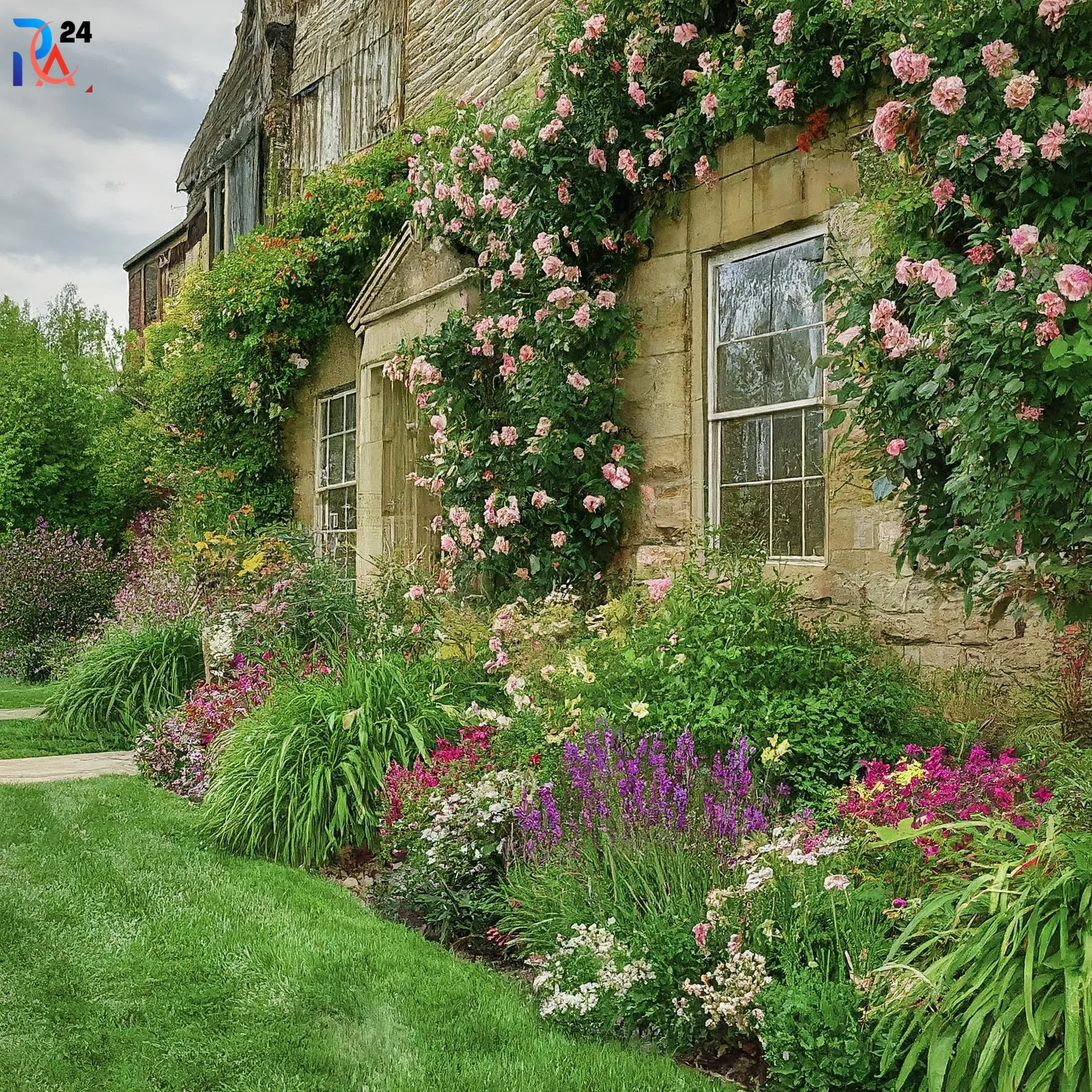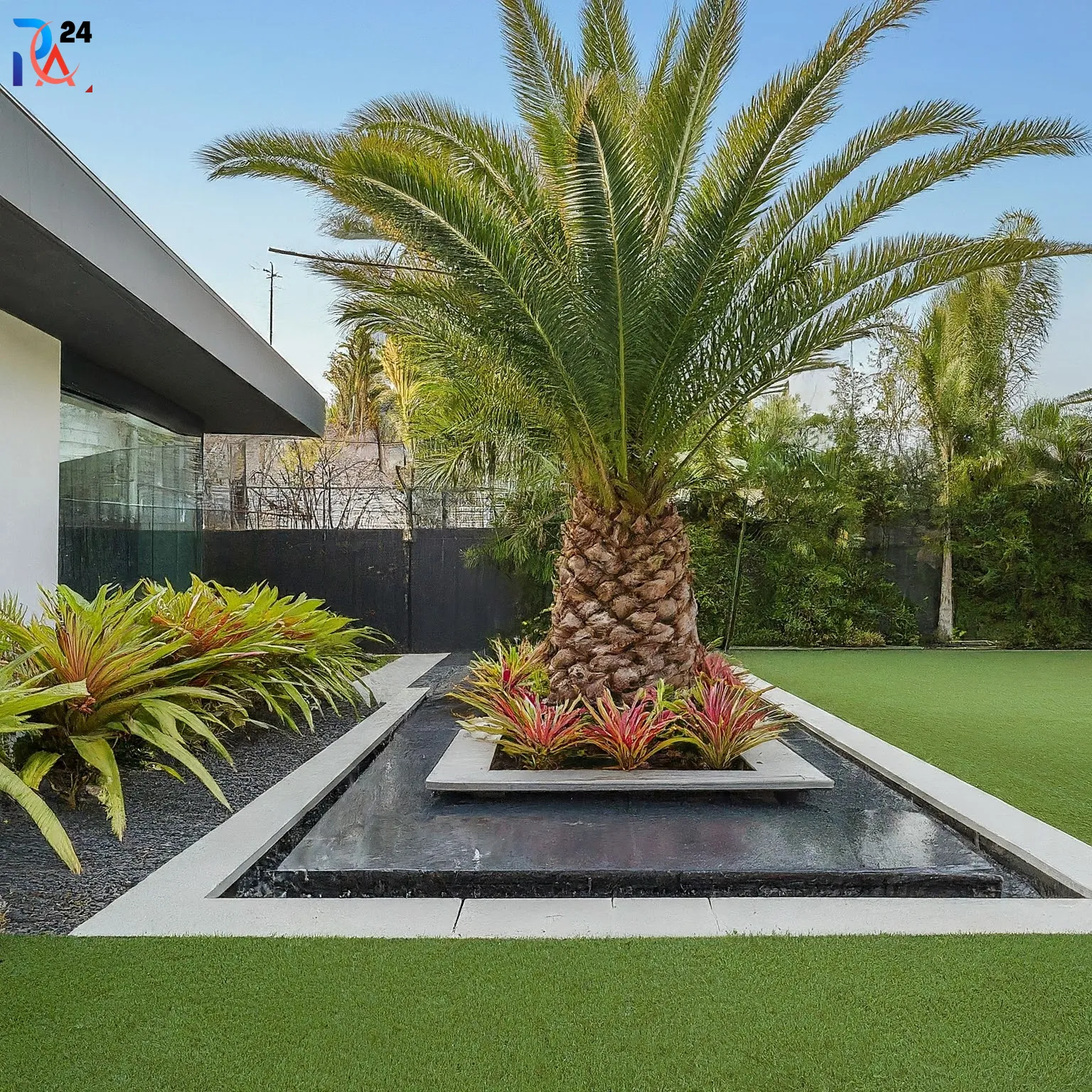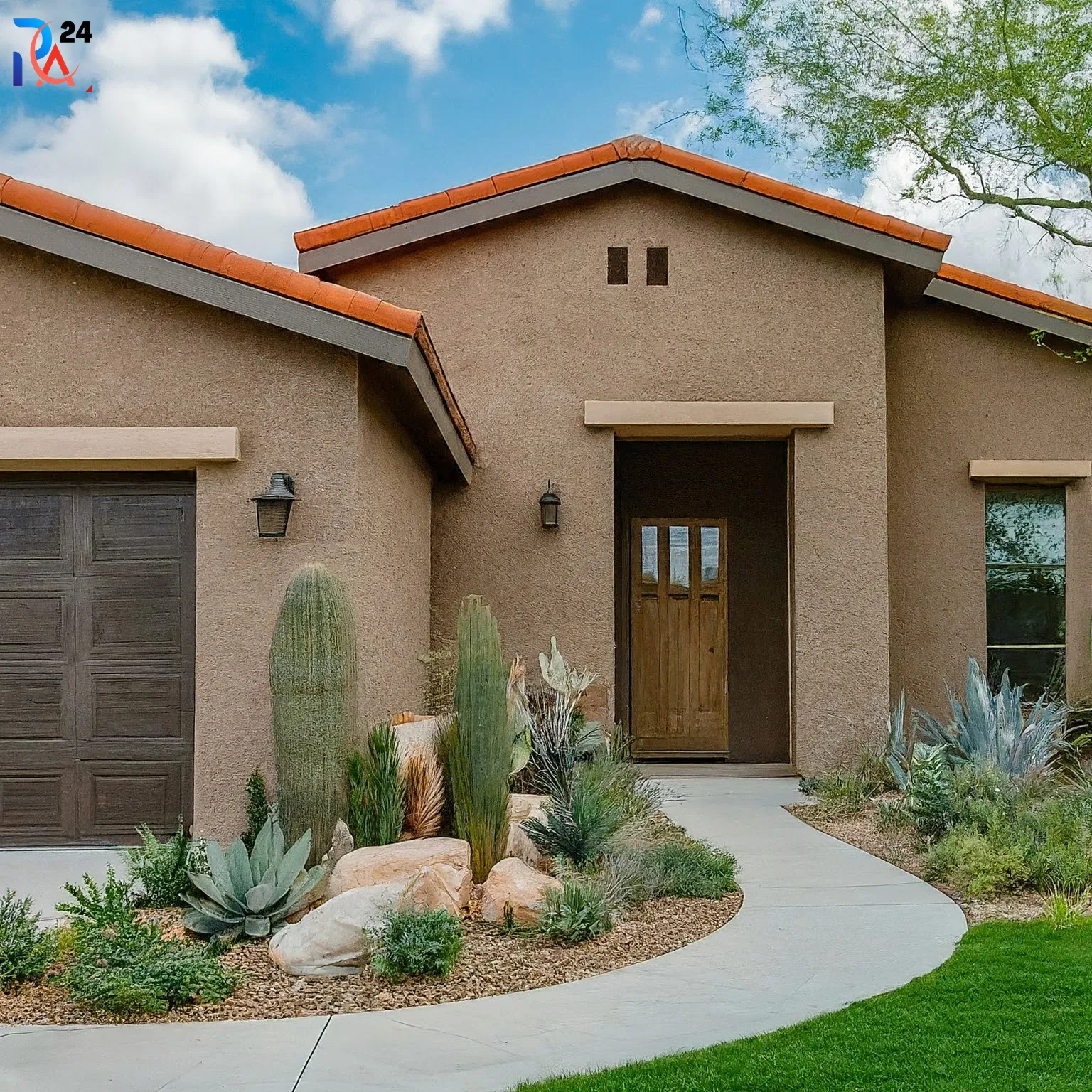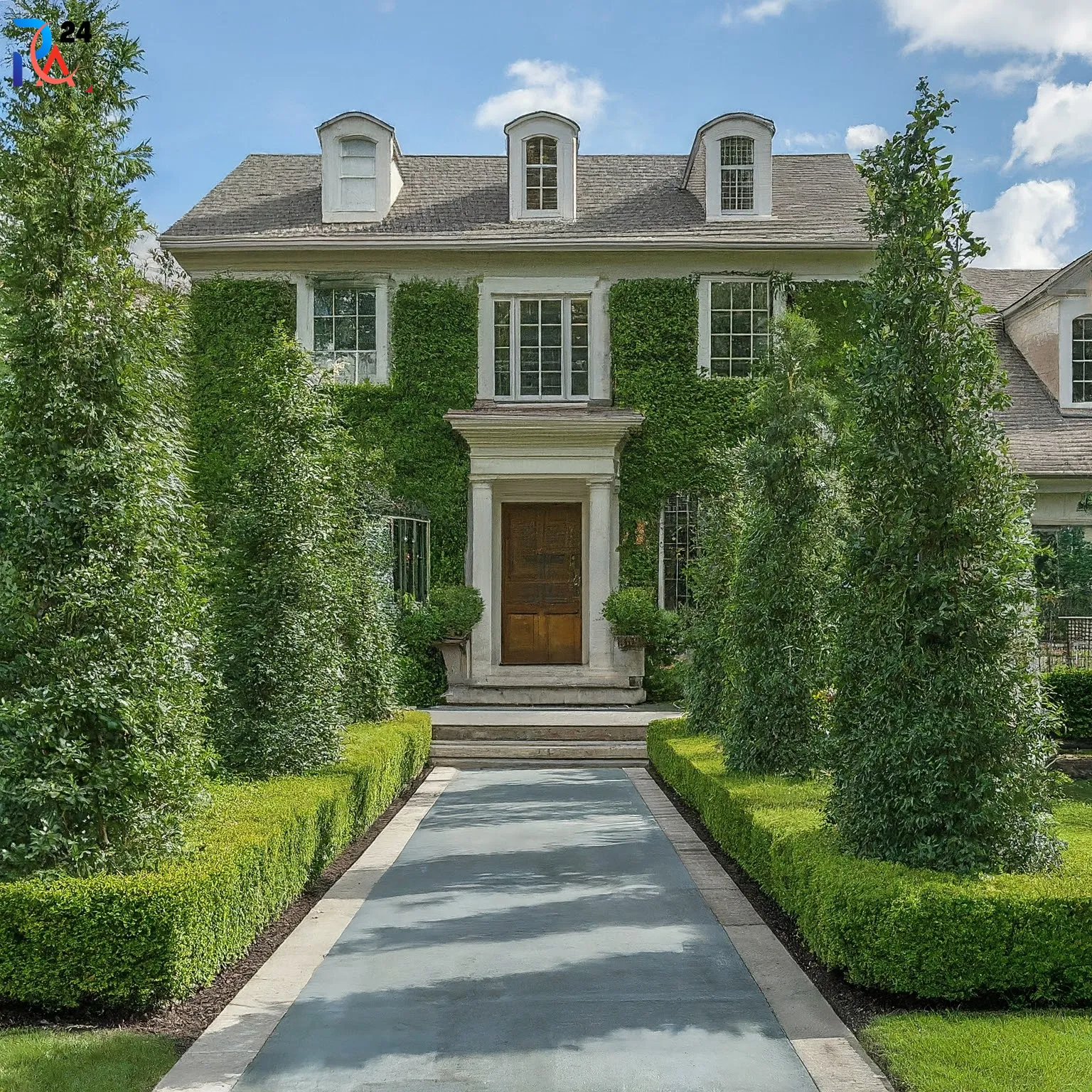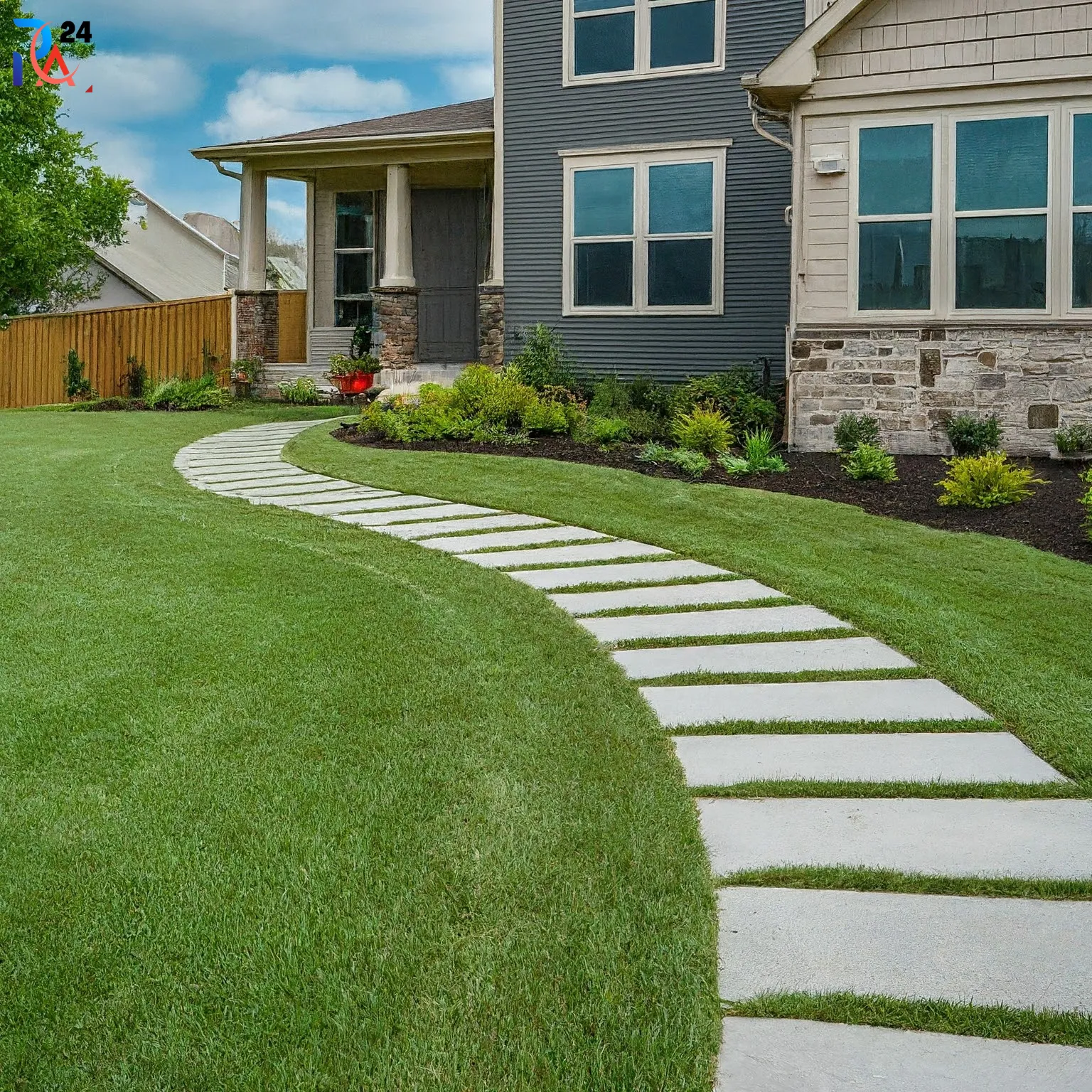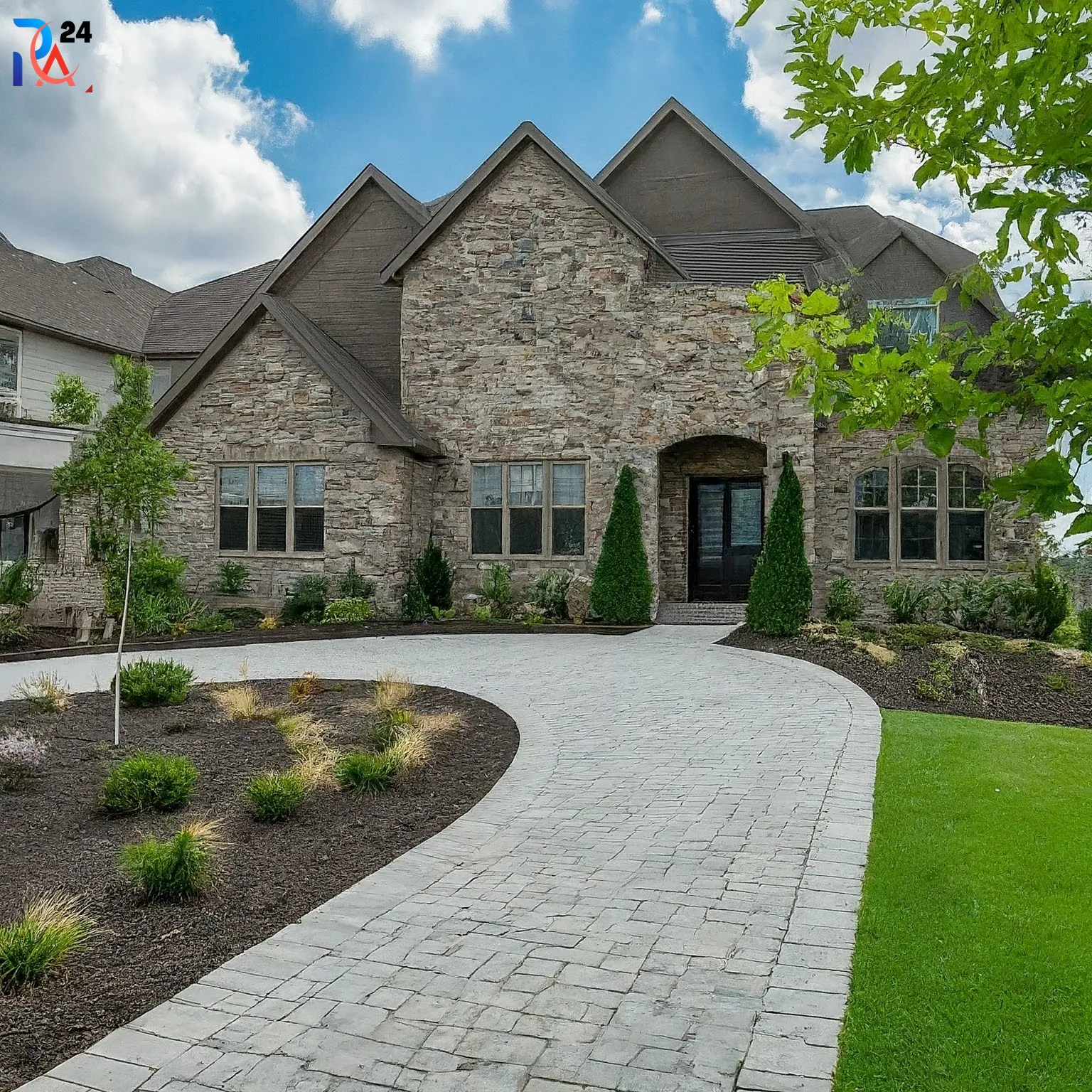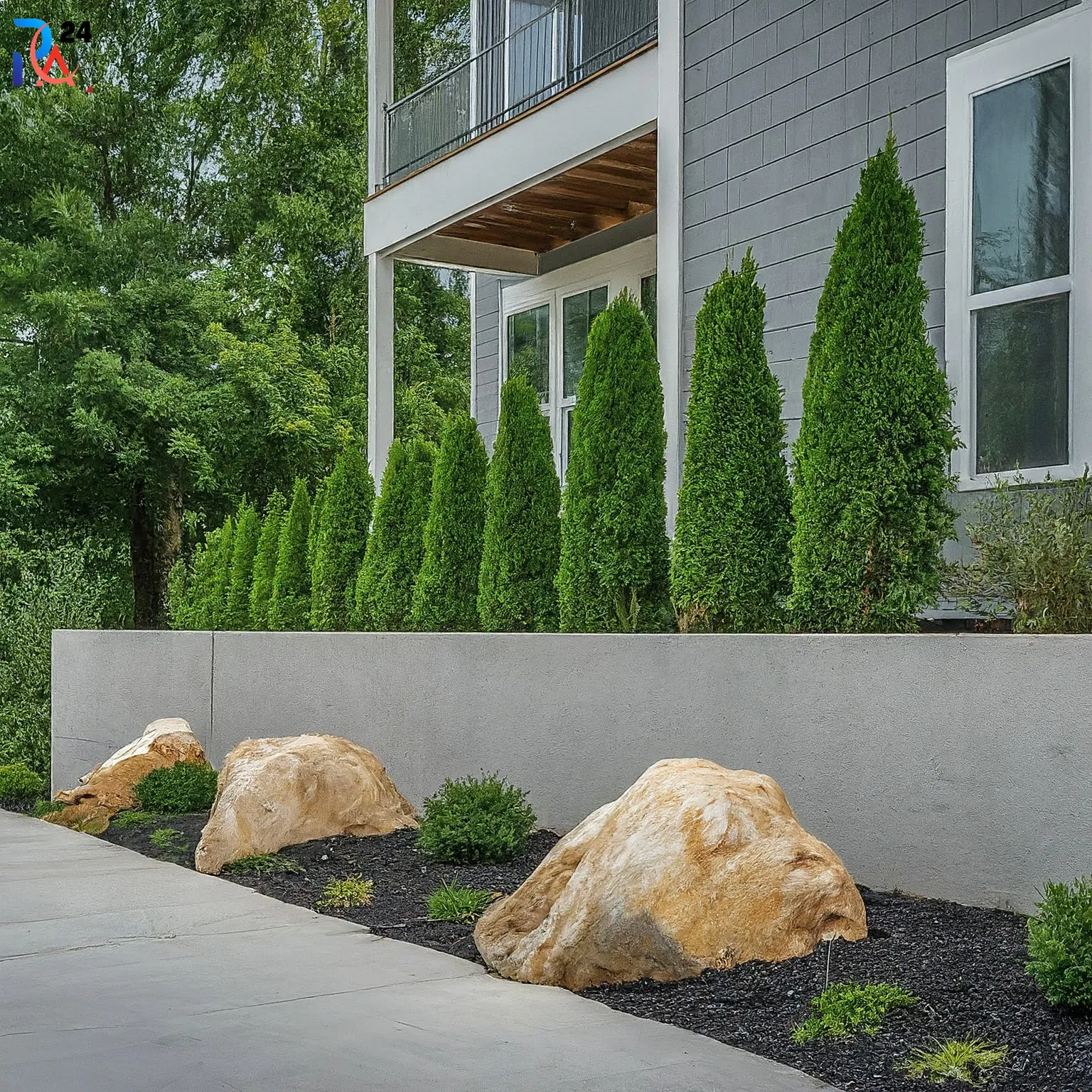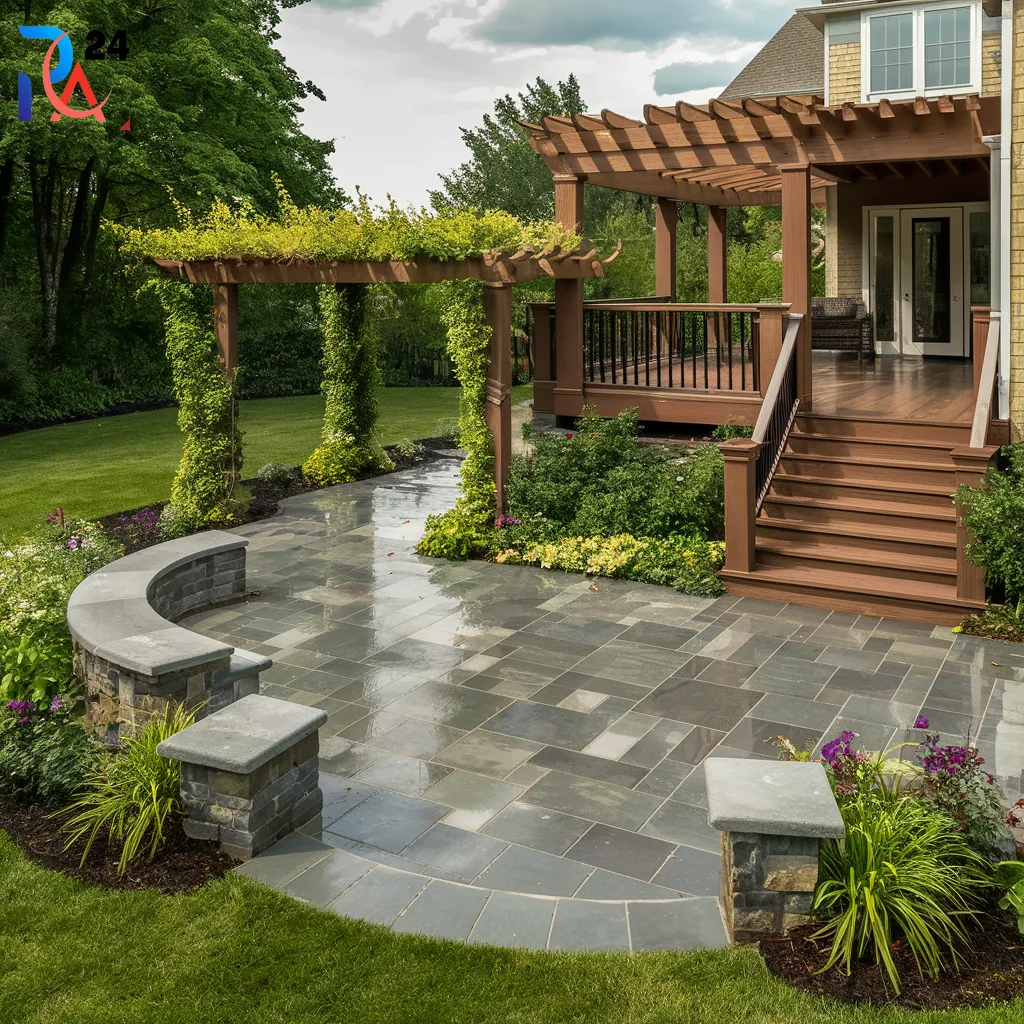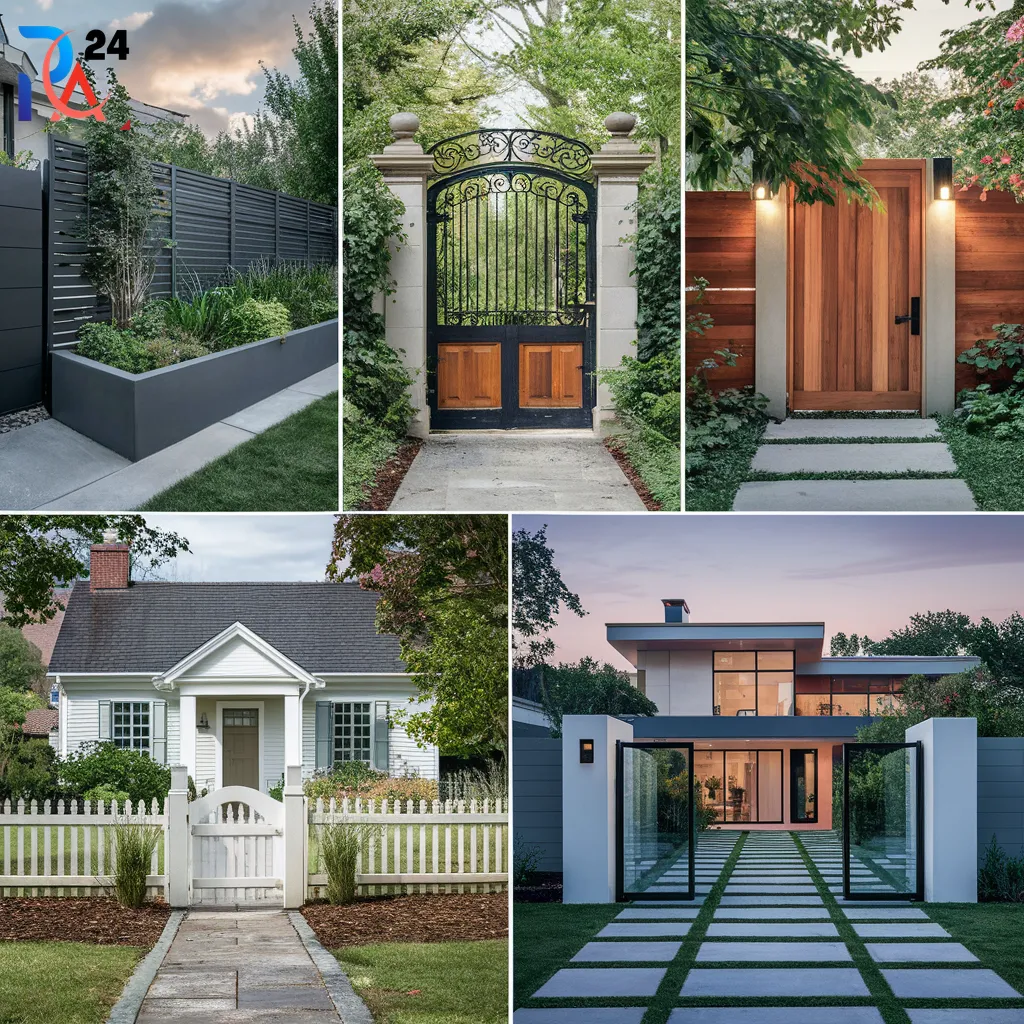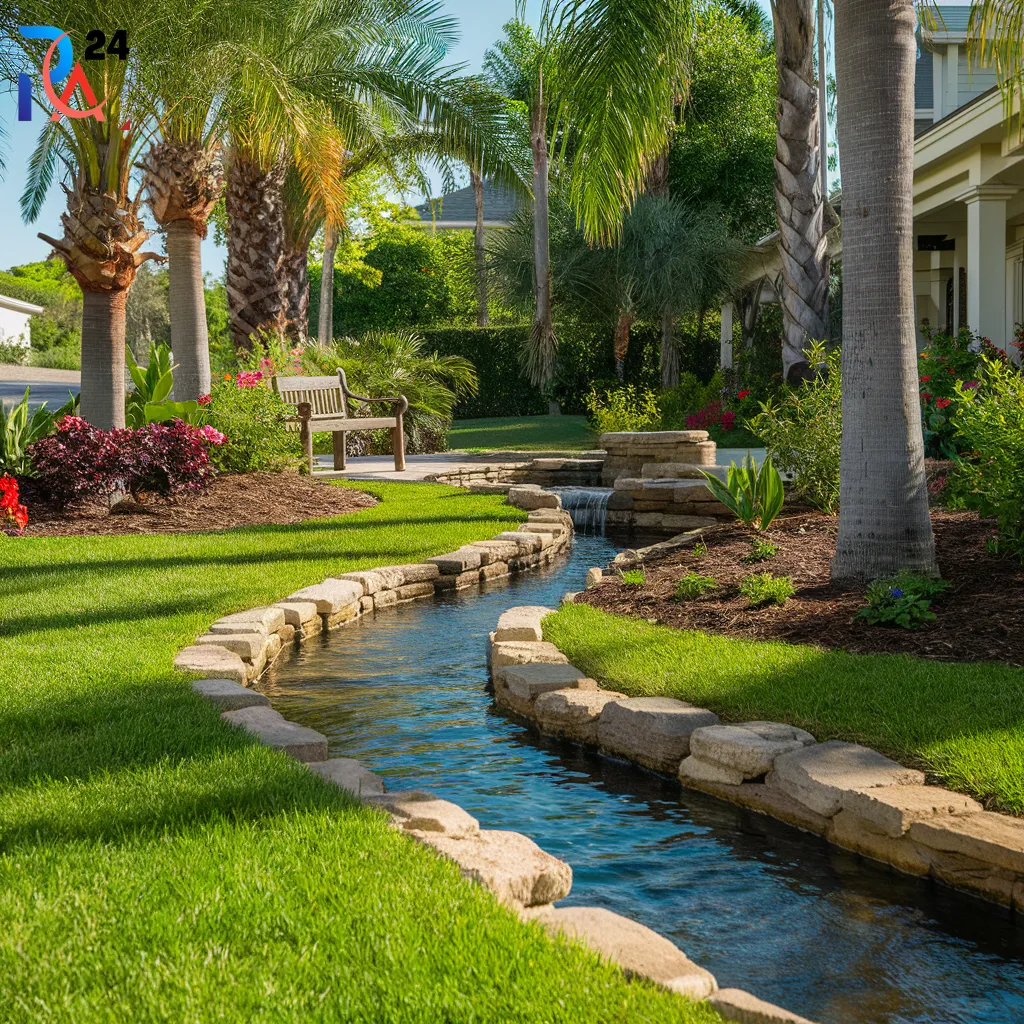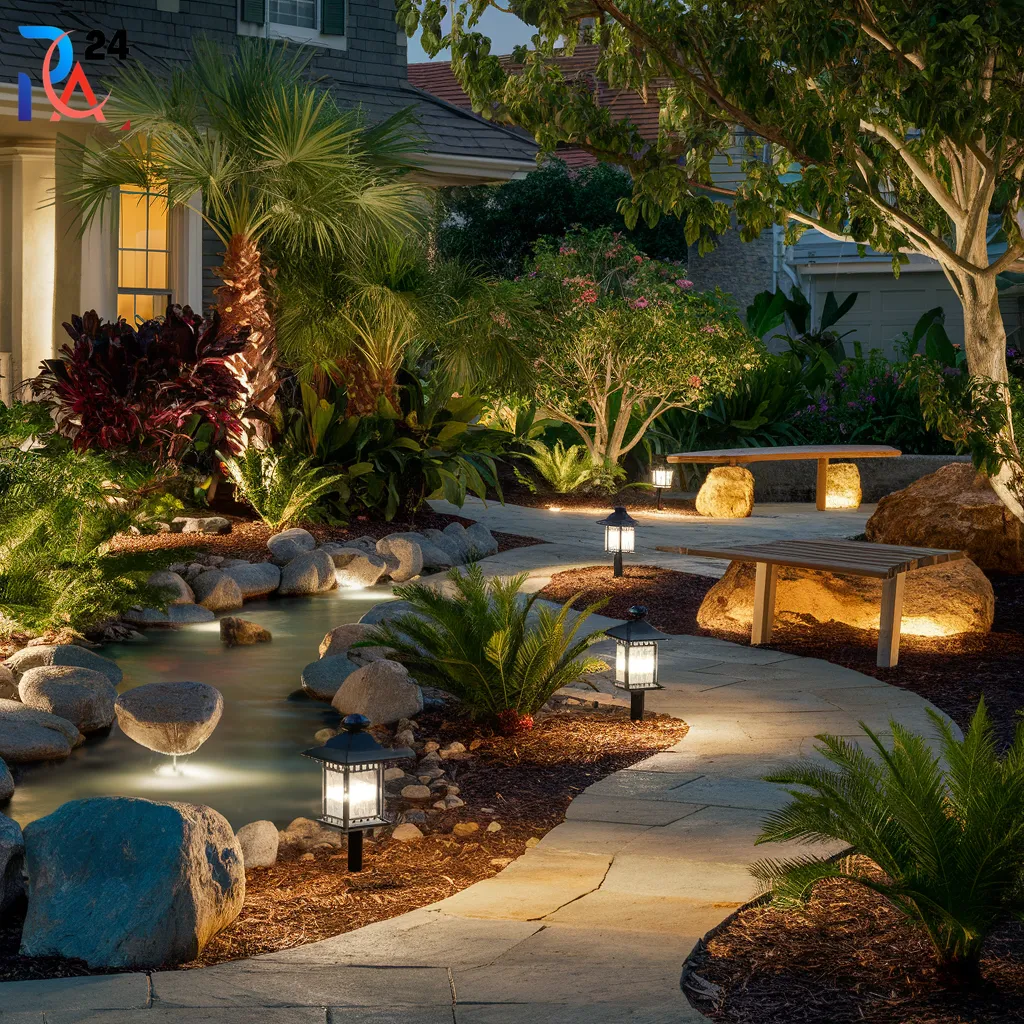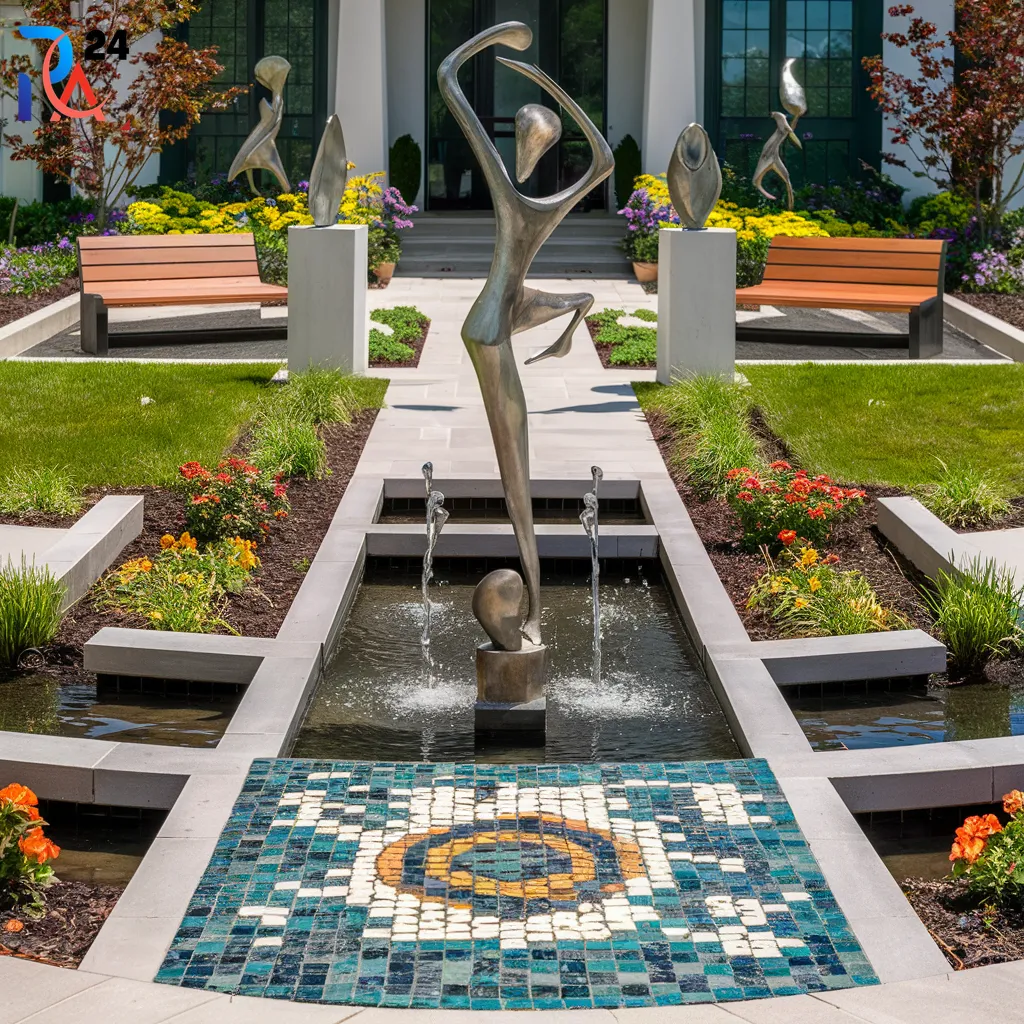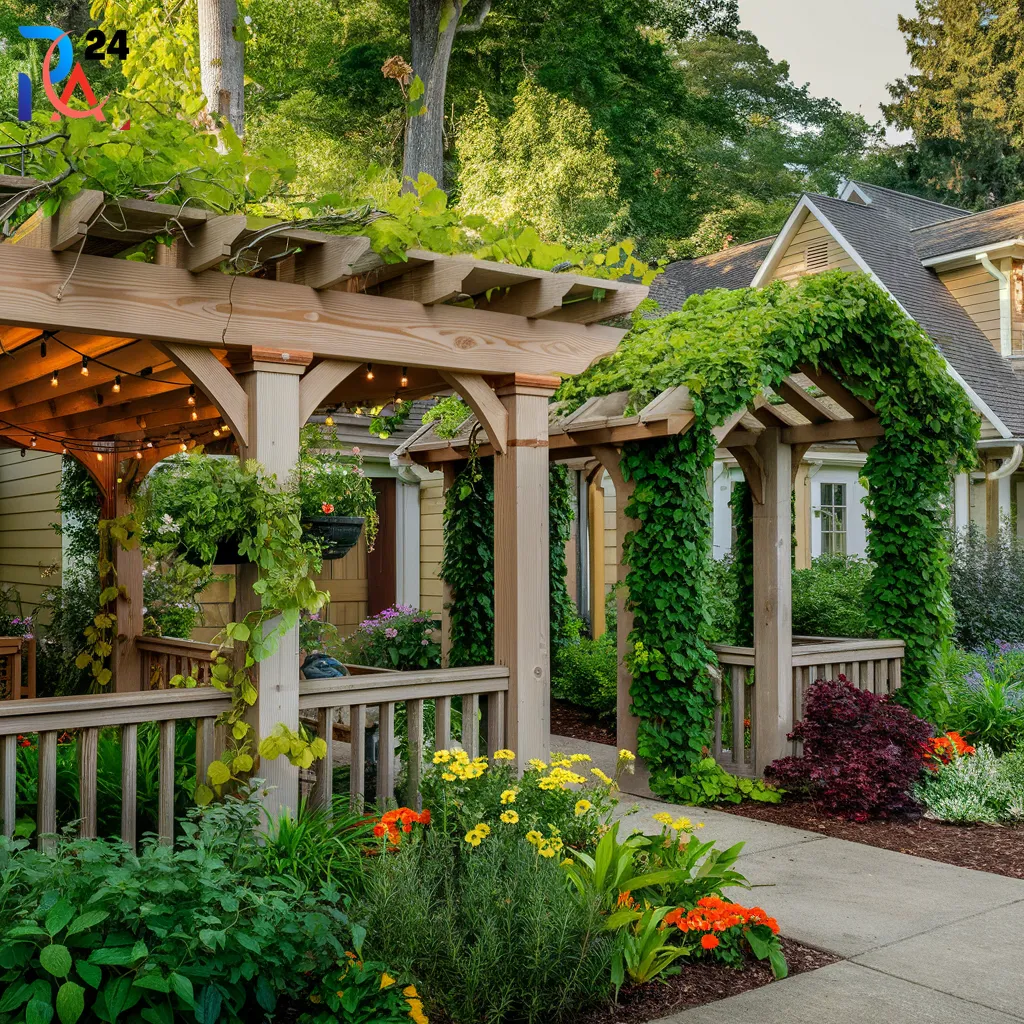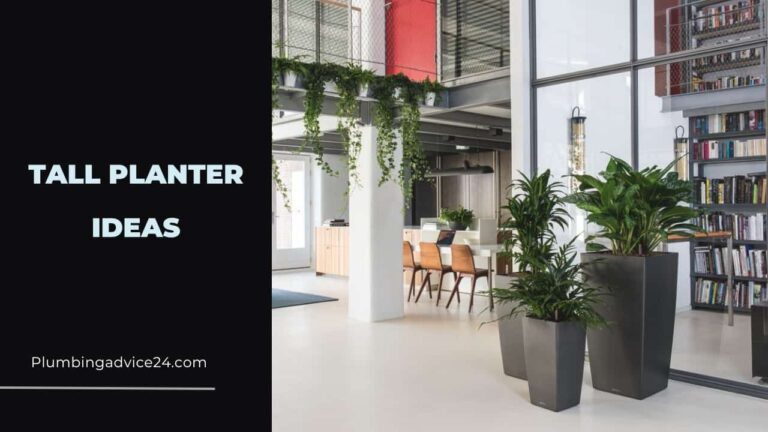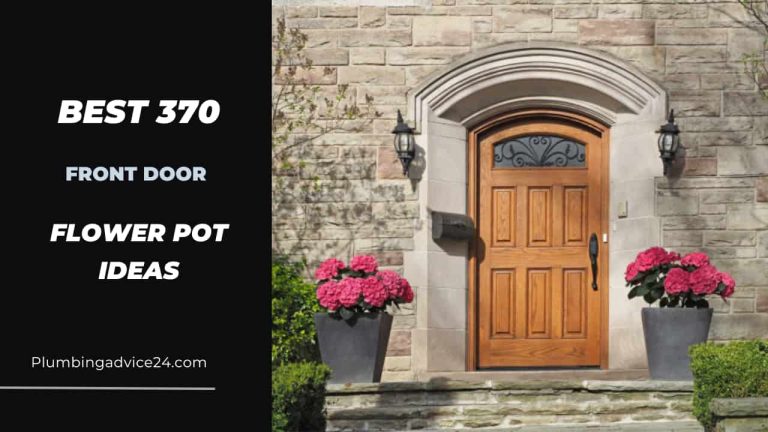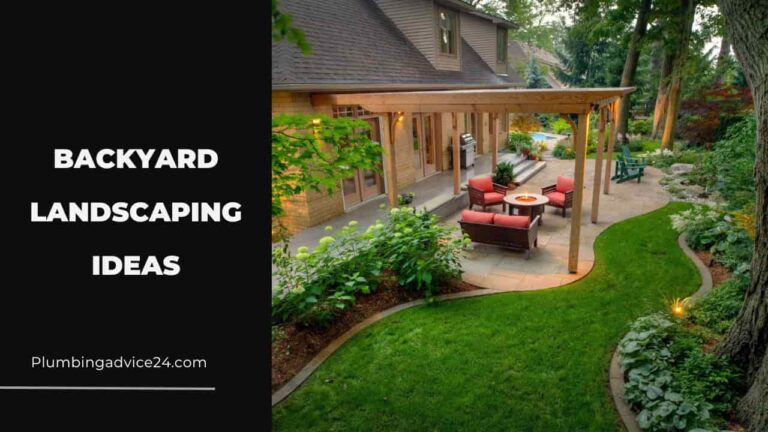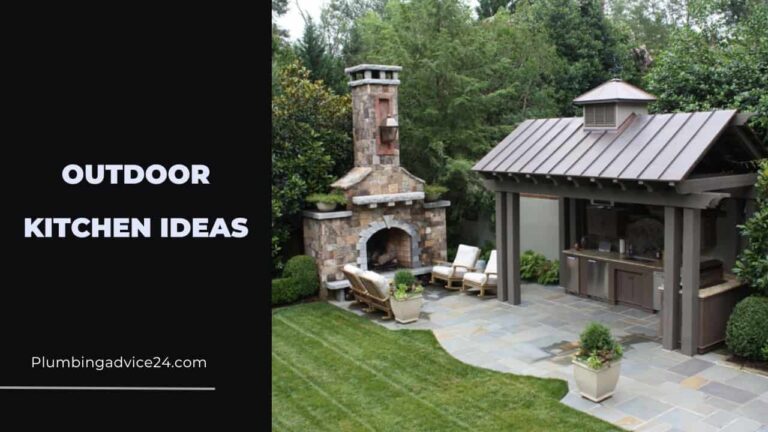Front Yard Landscape Ideas: Creating Spaces for Outdoor Living
Creating the perfect front yard doesn’t just enhance the beauty of your home; it boosts its value and charm too. If you’re on the hunt for front yard landscape ideas that will transform your outdoor space into a stunning and welcoming entrance, you’re in the right place.
This guide will walk you through a variety of front yard landscaping strategies, from selecting the right plants and materials to incorporating stylish and practical design elements.
Whether you’re looking to undertake a full transformation or just want to make a few impactful changes, these front yard landscape ideas will help you achieve a more attractive and inviting home exterior.
Theme-Based Landscaping for Front Yards
When designing your front yard, selecting a landscaping theme can guide your decisions and help you achieve a cohesive and beautiful space.
Here are several popular landscaping themes, each offering unique aesthetic appeal and atmosphere, suitable for different architectural styles and personal preferences.
1. Contemporary Minimalism
Contemporary minimalist landscaping emphasizes simplicity, clean lines, and a restrained palette that complements modern architectural styles.
This approach often involves the use of geometric shapes in garden layouts, hardscaping, and minimalist plant selections.
Materials like concrete, steel, and glass are prominent, along with a color scheme that typically features shades of grey, black, and white.
Plants are often chosen for their architectural qualities; grasses, succulents, and other low-maintenance species that do not require frequent pruning or intricate care are popular choices.
The focus is on creating open, serene spaces that function as extensions of the living area, emphasizing form and structure over ornamentation.
2. Cottage Garden
Cottage gardens are characterized by their dense plantings, which blend edible and ornamental plants in a seemingly haphazard but charmingly cohesive manner.
This style is quintessentially English and is known for its lush displays of blooms and an abundance of greenery, creating a picturesque, fairy-tale vibe.
Typical plants include climbing roses, foxgloves, hollyhocks, and lavender, along with various herbs and vegetable patches.
Pathways are often narrow and winding, made from natural stone or brick, and the garden is usually accessorized with quaint birdhouses, rustic arbors, and vintage garden furniture.
The overall feel is casual and inviting, with an emphasis on personal expression through garden accessories and plant varieties.
3. Mediterranean Retreat
Inspired by the coastal regions of Southern Europe, Mediterranean gardens evoke a sense of sun-drenched leisure.
They are designed to be low-maintenance, utilizing drought-tolerant plants that thrive in hot and dry environments.
Key elements include olive trees, citrus trees, lavender, rosemary, and other herbs, alongside a palette of terracotta pots, pebbled paths, and mosaic tiles.
Water features like small fountains or birdbaths are common, adding a refreshing visual and auditory element to the garden.
The color scheme typically involves warm earth tones, reflecting the natural landscape of the Mediterranean region.
This garden style is perfect for creating a relaxing outdoor space that requires minimal watering and upkeep.
4. Japanese Zen Garden
The Japanese Zen garden is designed for contemplation and meditation, focusing on minimalism, asymmetry, and balance.
These gardens are an expression of traditional Japanese aesthetics, emphasizing tranquility and the natural beauty of minimalist landscapes.
Elements such as rocks, gravel, moss, and carefully pruned trees or bushes like bonsai or Japanese maples are integral, often arranged in stylized natural scenes that mimic waterfalls, islands, or mountains.
Sand or fine gravel is raked into patterns that represent ripples in water, creating a meditative focus.
Water elements, bridges, stone lanterns, and a bamboo fence can also be included to enhance the serene and introspective nature of the garden.
This type of landscaping is ideal for those looking to create a peaceful sanctuary in their front yard.
5. English Country Garden
The English country garden is renowned for its romantic, lush, and somewhat informal style, filled with an array of colorful flowering plants.
This type of garden typically includes perennials like delphiniums, foxgloves, and roses, alongside flowering shrubs such as hydrangeas and rhododendrons.
Herbs and vegetables may also be intermixed, creating a practical and picturesque scene. Key features include winding paths lined with natural stone or brick, small wooden gates, and benches hidden amongst the foliage.
Picket fences or hedgerows often define boundaries, enhancing the garden’s cozy and inviting atmosphere.
This garden style is ideal for those who enjoy a vibrant, bloom-filled yard that changes throughout the seasons.
6. Tropical Paradise
A tropical paradise garden transports you to a lush, vibrant environment, emphasizing bold colors and large, dramatic foliage.
Plants such as palms, bird of paradise, and other broad-leafed species are staples, creating a dense, jungle-like feel.
Brightly colored flowers and fruits add to the exotic allure. Water features like small waterfalls or ponds are common, reflecting the natural habitats of tropical regions.
Materials such as bamboo and weathered wood are often used for furniture and decorations, complementing the natural scenery.
This style is well-suited to warmer climates or can be adapted with cold-hardy equivalents in cooler regions.
7. Desert Landscape
Desert landscaping, or xeriscaping, is designed to conserve water and thrive in arid environments.
This style uses drought-resistant plants like cacti, succulents, and other native desert species that require minimal irrigation.
The color palette typically features earth tones, with pops of color from flowering succulents or native wildflowers.
Gravel, stones, and rocks are used to cover the ground, reducing water loss and maintenance while still offering aesthetic appeal.
Architectural features like large rocks and sculptures can be added to create focal points.
Desert landscapes are ideal for modern homes in dry climates, offering a sustainable and stylish solution to garden design.
8. Formal Symmetry
Formal symmetry in landscaping is characterized by precise geometric planning and balanced design.
This style is heavily influenced by classical European gardens, featuring straight lines and often a central axis that the rest of the garden mirrors.
Plants are usually pruned into geometric shapes or formal hedges, and topiaries may be featured.
Common elements include neatly trimmed lawns, symmetrical flower beds, and paths that lead to focal points such as fountains or statues.
Materials like marble, trimmed boxwood, and orderly brickwork emphasize the elegance and controlled nature of the space.
Formal gardens are particularly suitable for grand, traditional homes where the garden serves as an extension of the architectural harmony.
Hardscaping Elements for Front Yard Landscaping
Hardscaping involves the incorporation of non-living materials into your landscape design, providing structure and organization to the outdoor spaces.
These elements can range from functional to decorative and play a critical role in enhancing the overall aesthetics and usability of your front yard.
Here are some essential hardscaping elements to consider for your front yard landscape:
1. Pathways and Walkways
Pathways and walkways serve as the guiding lines that lead visitors through your front yard to your home, setting the stage for first impressions.
Choosing the right materials, like flagstone, pavers, or decorative concrete, can complement your home’s exterior and enhance the garden’s design.
Design considerations such as width, curvature, and edging should be tailored to match the overall landscape style, whether it’s formal or informal.
2. Driveways
An integral part of any front yard, driveways are typically designed for functionality but also contribute significantly to the property’s curb appeal.
Material options include asphalt, concrete, gravel, and block paving, each offering different aesthetic and maintenance levels.
A well-planned driveway not only accommodates vehicular access but also integrates seamlessly with the home’s front landscape design.
3. Retaining Walls
Retaining walls are practical structures that help manage sloped terrains by preventing soil erosion and creating level areas for gardening.
Materials such as stone, concrete, or timber can be used, depending on the desired look and structural requirements.
These walls can also be decorative, incorporating seating or lighting to enhance their utility and appearance.
4. Patios and Decks
Patios and decks are key elements for creating outdoor living spaces in the front yard. These areas provide platforms for socializing, dining, or relaxing outdoors.
Materials like wood, composite decking, or stone pavers can be selected to match the home’s architectural style or personal preference, focusing on durability and ease of maintenance.
5. Fences and Gates
Fences and gates not only define property boundaries but also enhance security and privacy. The choice of materials—from wood and metal to vinyl—should reflect the home’s style and the landscape’s theme.
Gates can be designed as grand entrances or discreet passageways, often enhanced with automated opening systems for convenience and safety.
6. Water Features
Water features such as fountains, ponds, or cascading waterfalls add a dynamic and soothing element to front yard landscaping.
These features can serve as central focal points and are particularly effective in creating a serene atmosphere, attracting wildlife, and masking traffic noise.
7. Lighting
Good lighting is essential for safety, accessibility, and evening aesthetics. Options include pathway lights, spotlights, and accent lights, which can highlight architectural features or key plants.
Solar-powered lights offer an environmentally friendly option, reducing electricity usage while providing necessary illumination.
8. Outdoor Art and Sculptures
Incorporating art pieces such as sculptures, statues, or decorative panels can personalize your front yard space and create visual interest.
These elements should complement the garden’s theme and can act as conversation starters or focal points within the landscape.
9. Pergolas and Arbors
Pergolas and arbors add vertical interest to landscapes and provide support for climbing plants, creating natural green archways.
These structures can define entryways or act as a transition between different areas of the yard.
Materials often include wood or metal, styled to match the garden’s aesthetic and designed to integrate seamlessly with the surrounding plants and hardscape.
Eco-Friendly Practices for Front Yard Landscaping
Implementing eco-friendly practices in front yard landscaping not only benefits the environment but can also enhance the beauty and sustainability of your outdoor space. Here are some key strategies:
- Use Native Plants: Choosing plants native to your region reduces water and fertilizer needs, as they are adapted to the local climate and soil conditions. This also helps support local wildlife, providing habitat for birds, bees, and butterflies.
- Implement Water Conservation Techniques: Consider drought-resistant plants, and utilize mulching to retain soil moisture. Rain gardens and permeable paving can help manage water runoff and replenish groundwater.
- Opt for Organic Mulches: Using organic mulches like bark or compost helps suppress weeds naturally, retain soil moisture, and improve soil fertility as they decompose.
- Practice Natural Pest Management: Instead of relying on chemical pesticides, use natural pest control methods such as encouraging beneficial insects, using barriers, and applying natural repellents.
- Reduce Lawn Areas: Large grassy areas can be high maintenance and water-intensive. Reducing lawn space and replacing it with ground covers, garden beds, or hardscaping can decrease water usage and maintenance efforts.
Plant Selection for Front Yard Landscaping
Choosing the right plants is crucial for creating a beautiful and sustainable front yard landscape.
Your plant selection can influence not only the appearance of your yard but also its maintenance needs and environmental impact.
Here are key considerations and suggestions for selecting plants that will thrive in your front yard:
1. Consider Climate and Soil
- Climate Adaptation: Select plants that are well-suited to your local climate. Native plants are often the best choice because they’re adapted to the region’s weather and less susceptible to pests and diseases.
- Soil Type: Understand your soil type—whether it’s clay, loam, or sandy. This will help determine which plants are best suited and what soil amendments may be needed.
2. Purpose of Plants
- Privacy: For creating privacy, consider tall shrubs or trees like arborvitae, bamboo, or tall grasses.
- Aesthetics: Choose plants that complement the style of your home and existing landscape. For example, ornamental grasses and succulents for modern designs, or roses and lavender for cottage styles.
- Functionality: Some plants can serve specific functions, such as groundcover plants like creeping thyme or juniper to control erosion.
3. Maintenance Requirements
- Opt for plants that match your willingness and ability to perform yard maintenance. Low-maintenance plants are ideal for those who prefer a more hands-off approach, such as sedums, daylilies, and native shrubs.
4. Seasonal Interest
- Ensure your yard remains visually appealing throughout the year by choosing a mix of plants that peak at different times. Include spring bulbs, summer perennials, fall foliage, and winter-interest plants like evergreens or plants with attractive bark or structure.
5. Size and Growth Habit
- Consider the mature size of plants to avoid overcrowding and reduce maintenance. Understand the growth habits—whether a plant spreads or stays compact—to ensure it fits well within your space without extensive pruning.
6. Color and Texture
- Play with color schemes to create different moods. Cool colors (blues, purples, greens) can make a space feel larger and more relaxed, while warm colors (reds, oranges, yellows) create a sense of excitement and draw attention.
- Mix textures to add depth and contrast. Combine fine-textured plants like ferns with coarse-textured ones like agave.
7. Sustainability
- Consider drought-resistant and native plants to reduce water usage and support local wildlife. Implementing a xeriscape or rain garden can be beneficial in managing water efficiently while maintaining a beautiful landscape.
8. Pollinator-Friendly Plants
- Include plants that attract pollinators like bees, butterflies, and hummingbirds, which not only help the ecosystem but also ensure your garden is lively and productive. Examples include coneflowers, bee balm, and butterfly bush.
Examples of Plants for Various Front Yard Themes
- Contemporary Minimalist: Boxwoods, Japanese maples, sedums, and ornamental grasses.
- Cottage Garden: Foxgloves, hydrangeas, delphiniums, and peonies.
- Mediterranean Retreat: Olive trees, lavender, rosemary, and palms.
- Japanese Zen: Bonsai, azaleas, bamboo, and moss.
- Tropical Paradise: Hibiscus, bird of paradise, palms, and ferns.
Seasonal Tips for Front Yard Maintenance
Keeping your front yard looking its best requires year-round attention. Here are seasonal landscaping tips:
- Spring: This is the time for planting new flowers and vegetables, mulching beds, and pruning shrubs and trees. It’s also a good time to repair any hardscape damage from the winter months.
- Summer: Focus on watering efficiently—early in the morning or late in the evening are the best times to reduce evaporation. Keep on top of weeding and deadheading flowers to encourage new growth.
- Fall: Plant spring-blooming bulbs, aerate the lawn, and rake leaves to prevent them from smothering the grass. It’s also an ideal time to assess the landscape and plan any changes for the next year.
- Winter: Protect plants from frost with covers, and prune dormant trees and shrubs. Clear pathways of ice and snow promptly to ensure safety.
DIY Projects for Enhancing Your Front Yard
Engaging in DIY projects can be a satisfying way to improve your front yard. Here are a few project ideas:
- Build a Birdhouse or a Bee Hotel: These can help attract wildlife to your garden, providing essential habitats for birds and beneficial insects.
- Create a Pathway: Installing a simple stepping stone pathway can enhance the accessibility and aesthetic of your yard. You can use recycled materials like flat stones or repurposed bricks.
- Install a Rain Barrel: Collecting rainwater to use for watering your garden is an excellent way to conserve water and reduce your utility bills.
- Make a Flower Bed Border: Using stones, bricks, or naturally rot-resistant woods like cedar, you can craft a charming border for your flower beds, which helps define spaces and keeps grass from encroaching.
- Set Up Outdoor Lighting: Adding solar lights along pathways or spotlighting certain plants can make your front yard welcoming and accessible after dark.
Useful Articles:-
- Backyard Landscaping Ideas: Creating Your Outdoor Sanctuary
- Top Outdoor Kitchen Ideas to Elevate Your Backyard
- Top Fire Pit Garden Ideas for Every Backyard
- Stylish and Functional Tall Planter Ideas for Small Spaces
- Mailbox Flower Bed Ideas for Every Season
Conclusion:-
Your front yard is the gateway to your home, and with the right landscape design, it can be both beautiful and functional. Whether you implement a few changes or opt for a complete redesign, these ideas can help you create a front yard that you and your visitors will love.
By focusing on thoughtful design, appropriate plant selection, and sustainable practices, you can enjoy a front yard that not only looks great but is also easy to maintain and environmentally friendly. Start planning today and turn your front yard into the envy of the neighborhood!
